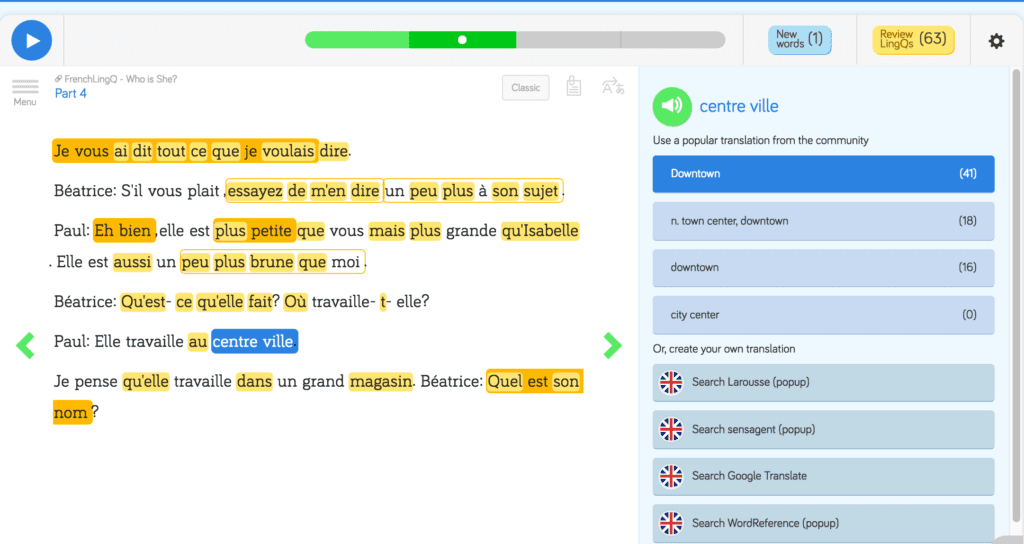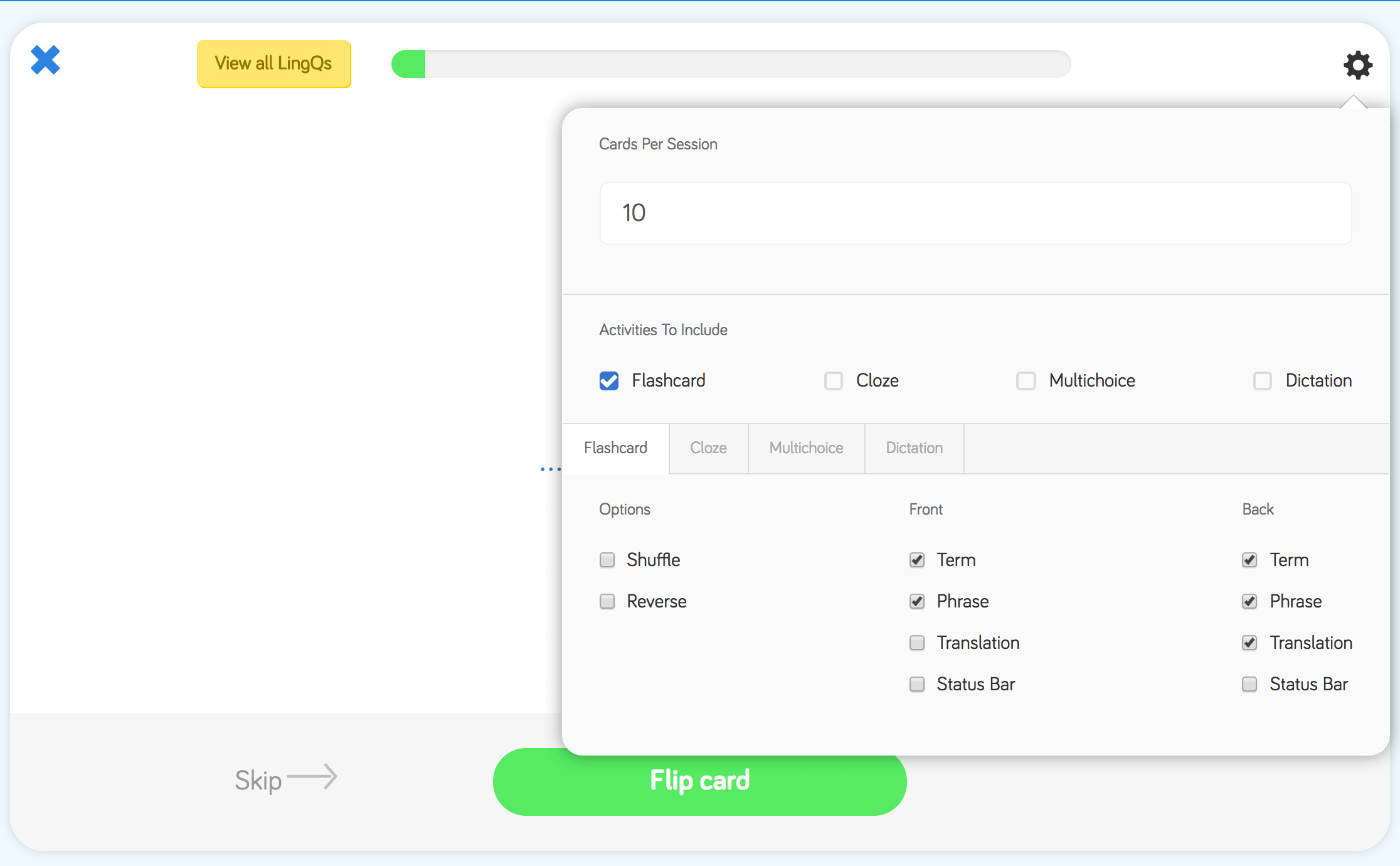How to Expand Your Vocabulary in Your Target Language
There are many schools of thought on how to expand your vocabulary in a language you’re learning. Should you try to memorize lists of words and their variations with flashcards? Make a memory palace? Eat the soul of a native speaker? There are so many techniques it can be confusing to know which one will work for you. Let’s get an expert opinion…

LingQ co-founder Steve Kaufmann speaks 16 languages and he’s still learning. How does he go about building vocabulary in his target languages? Reading a lot, listening a lot and noticing the language.
Immersing yourself in content that you find interesting and learning the vocabulary by seeing it in different contexts – that is the key to learning vocabulary in your target language.
Follow Steve’s simple content-based learning steps on LingQ, and your vocabulary will increase in no time.
1. Read and listen to content you actually find interesting
Remember those super interesting textbooks you learned languages from in school? No, neither do I. That’s because most of the content language learners are exposed to, especially early on, is dull as dishwater. It doesn’t have to be this way. Instead of learning phrases containing basic vocabulary, we as language learners should be learning from content, even as beginners, that piques our interests and motivates us to learn more.

Is celebrity news your guilty pleasure? Read it in French. Are you a foodie who loves finding new recipes? Discover some in Arabic. Always refreshing your phone to keep up to date with the latest world news? Read about it in Japanese.
You can find a range of content in the LingQ libraries from beginner level through to advanced, and you can upload anything you find online that looks interesting and use the LingQ reader to translate words and phrases as you read.
If you start a lesson and lose interest part-way through, move on to another one. The most important thing is that you’re interested in what you’re reading.
2. Mark up your content
If you’re reading a book or newspaper, take a pen to it. If you’re reading digitally, highlight as you go. Underline or highlight the words and phrases you don’t know. If you’re focusing on word endings, verb forms or any other features of the vocabulary, save those words and phrases and add a tag to help group them for later review.
Highlighting words and phrases like this on LingQ is called creating LingQs. Make sure to create many, many LingQs – you can’t create too many, but don’t feel pressured to review them. The best and most efficient reviewing happens when you come across your yellow LingQs in future lessons.

When you see your “LingQed” words and phrases again in different contexts, they become more and more familiar. The eventual goal when you find that you understand these terms is to move them to known, but it takes time to learn words and phrases, and they go through different stages of “known”. That’s why on LingQ you can move words and phrases through different statuses using the scale below.

Here’s what the different numbers mean:
1. New – review in one day
2. Recognized – review in 3 days
3. Familiar – review in 7 days
4. Learned – review in 30 days
✔ Known – review never
✘ Ignore – remove and don’t include in stats
Once you’ve finished reading the chapter/paragraph/sentence, whatever your level allows you to read comfortably and without frustration, go back and review what you’ve underlined.
3. Read and listen to the same content many times
There are always words that just do not stick, despite you having read them over and over again. That’s why you need to listen and read many times. Steve even suggests listening to or reading the same piece of content 10 or more times.
There will be parts that are fuzzy, but the effort you put in to trying to “get” these fuzzy parts keeps you focused and noticing the language. You will gradually notice the fuzzy parts, and also reinforce the parts that you already understand.
A great way to review vocabulary on LingQ is using the SRS (Spaced Repetition System) activities, which include flashcards, dictation, cloze and multiple choice. You can review your LingQs with all four of these activities or choose which ones to use in the settings.

Everything you’ve made LingQs with while reading and listening is saved, and the system shows you which words and phrases are most in need of review. Going too long without seeing a word means more chance of forgetting it, so it’s a good idea to review your LingQs.
The goal isn’t to get rid of your vocabulary – who’s to say you won’t forget that word you’re pretty sure you know in a few months? – but to use the SRS activities to review them daily. As a LingQ member you can opt into a daily “LingQs of the Day” email to remind you to review your vocabulary.
4. Listen fast and slow
Listen to content at normal speed, and then listen again at a slowed down pace. The LingQ system slows audio down for you, or you can use a program like Audacity. You will notice much more when you listen the second time to the slower version.

5. Use the language
Using the language is a great way to notice. When you write or speak, you tend to notice where your gaps and problems are. Of course, having your errors pointed out can also help you notice. This is helpful as long as we don’t expect the corrections to actually correct us – they will only help us notice.
With enough noticing, the brain will start to form new patterns for the language, and your vocabulary will grow.
***
Try these steps and expand your vocabulary in your target language!
